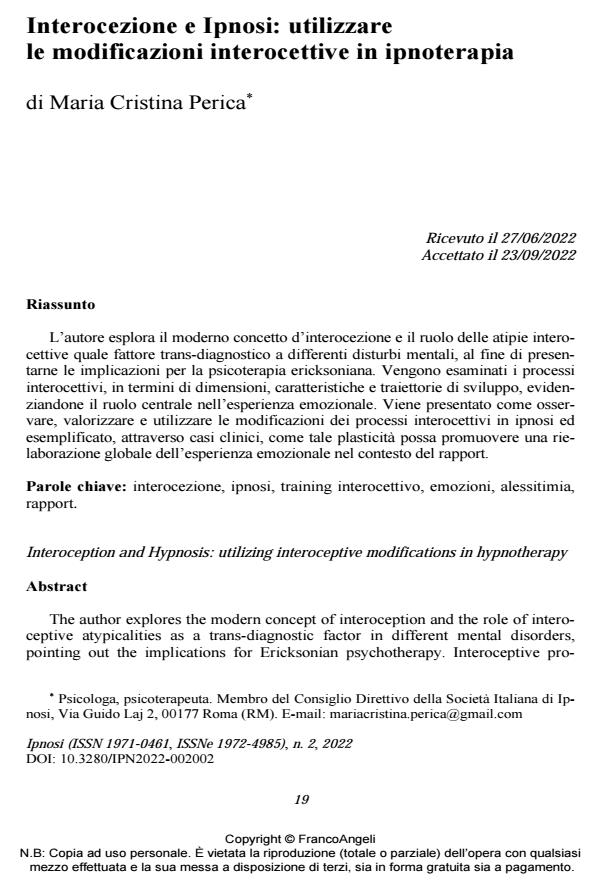Interocezione e Ipnosi: utilizzare le modificazioni interocettive in ipnoterapia
Titolo Rivista IPNOSI
Autori/Curatori Maria Cristina Perica
Anno di pubblicazione 2023 Fascicolo 2022/2
Lingua Italiano Numero pagine 17 P. 19-35 Dimensione file 220 KB
DOI 10.3280/IPN2022-002002
Il DOI è il codice a barre della proprietà intellettuale: per saperne di più
clicca qui
Qui sotto puoi vedere in anteprima la prima pagina di questo articolo.
Se questo articolo ti interessa, lo puoi acquistare (e scaricare in formato pdf) seguendo le facili indicazioni per acquistare il download credit. Acquista Download Credits per scaricare questo Articolo in formato PDF

FrancoAngeli è membro della Publishers International Linking Association, Inc (PILA)associazione indipendente e non profit per facilitare (attraverso i servizi tecnologici implementati da CrossRef.org) l’accesso degli studiosi ai contenuti digitali nelle pubblicazioni professionali e scientifiche
L’autore esplora il moderno concetto d’interocezione e il ruolo delle atipie inte-rocettive quale fattore trans-diagnostico a differenti disturbi mentali, al fine di pre-sentarne le implicazioni per la psicoterapia ericksoniana. Vengono esaminati i pro-cessi interocettivi, in termini di dimensioni, caratteristiche e traiettorie di sviluppo, evidenziandone il ruolo centrale nell’esperienza emozionale. Viene presentato co-me osservare, valorizzare e utilizzare le modificazioni dei processi interocettivi in ipnosi ed esemplificato, attraverso casi clinici, come tale plasticità possa promuo-vere una rielaborazione globale dell’esperienza emozionale nel contesto del rap-port.
Parole chiave:interocezione, ipnosi, training interocettivo, emozioni, alessitimia, rapport.
Maria Cristina Perica, Interocezione e Ipnosi: utilizzare le modificazioni interocettive in ipnoterapia in "IPNOSI" 2/2022, pp 19-35, DOI: 10.3280/IPN2022-002002